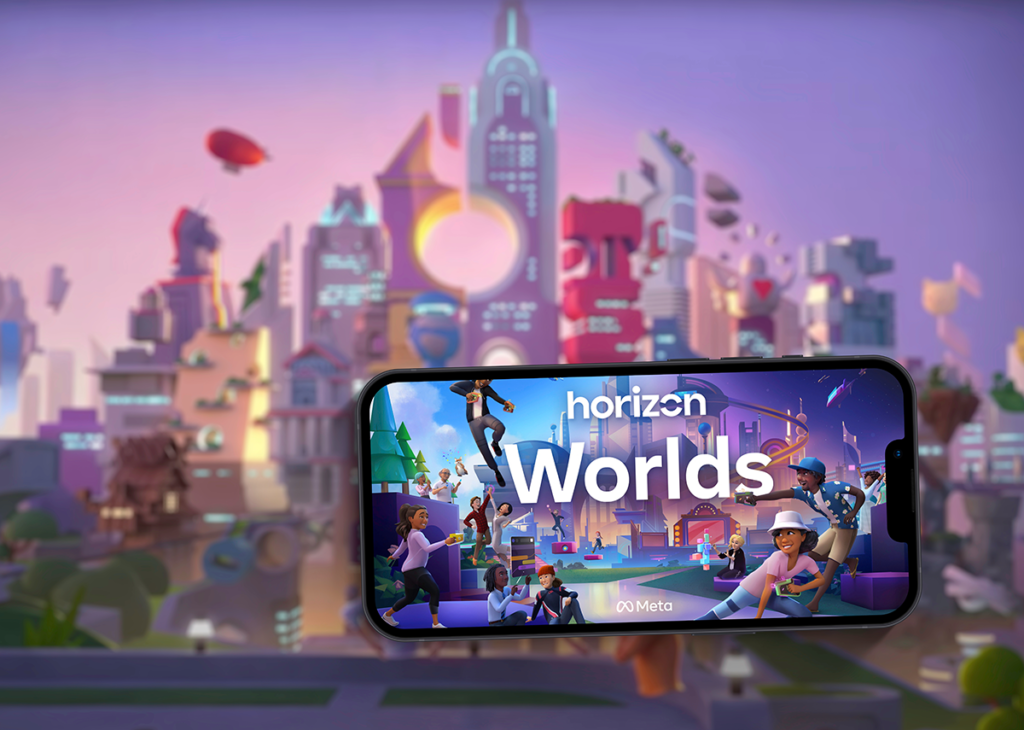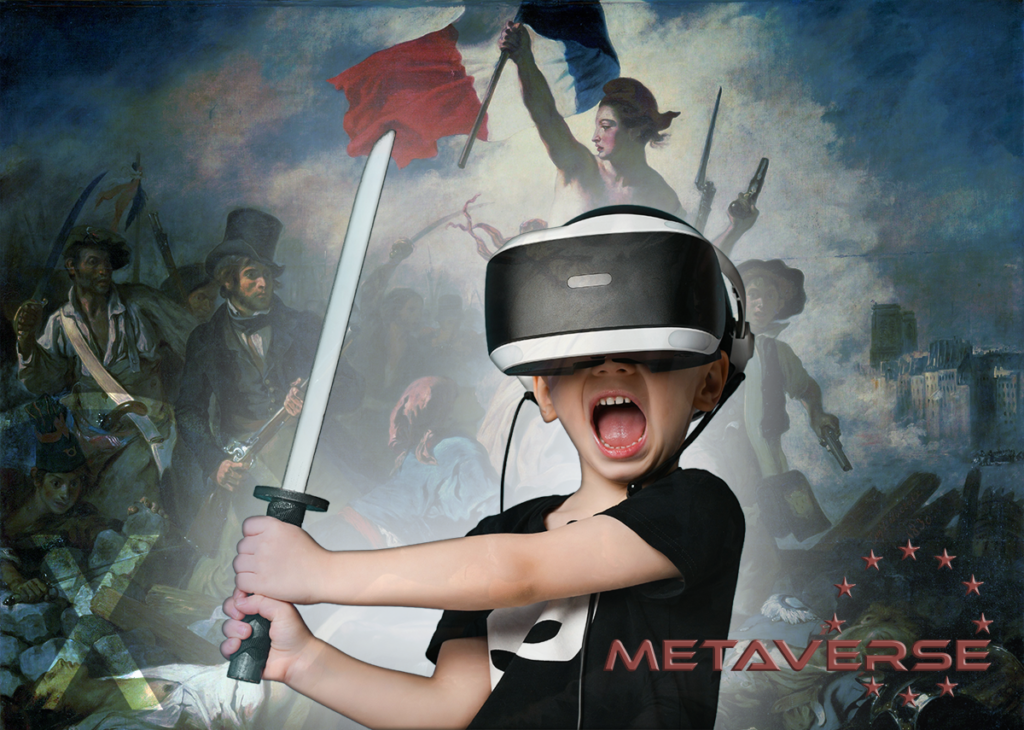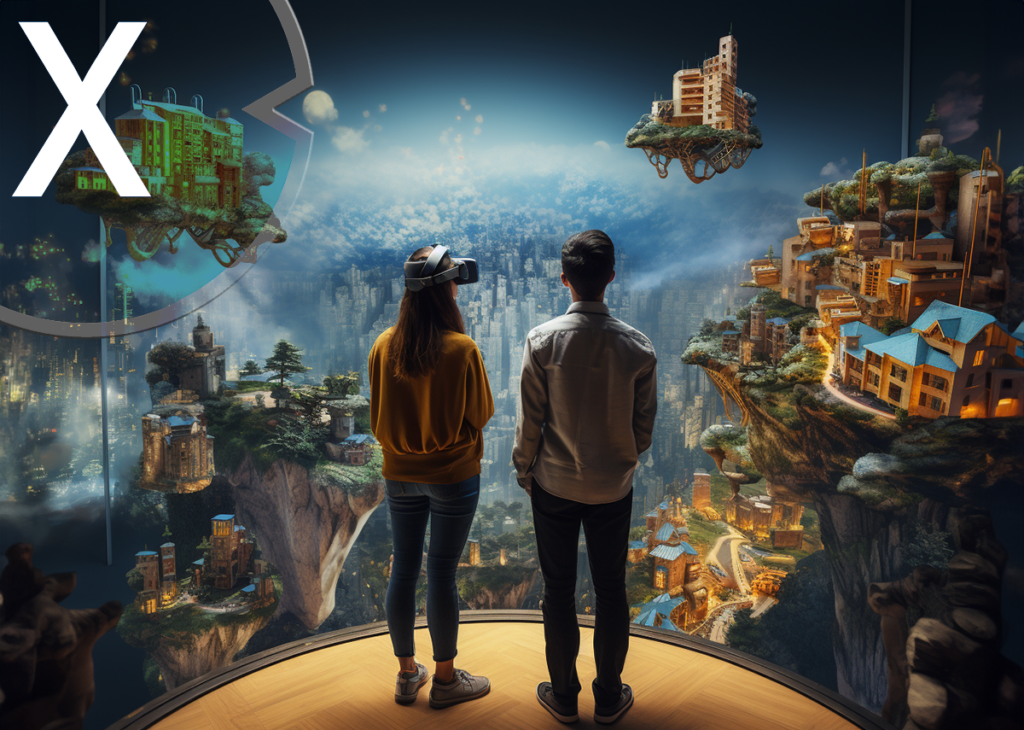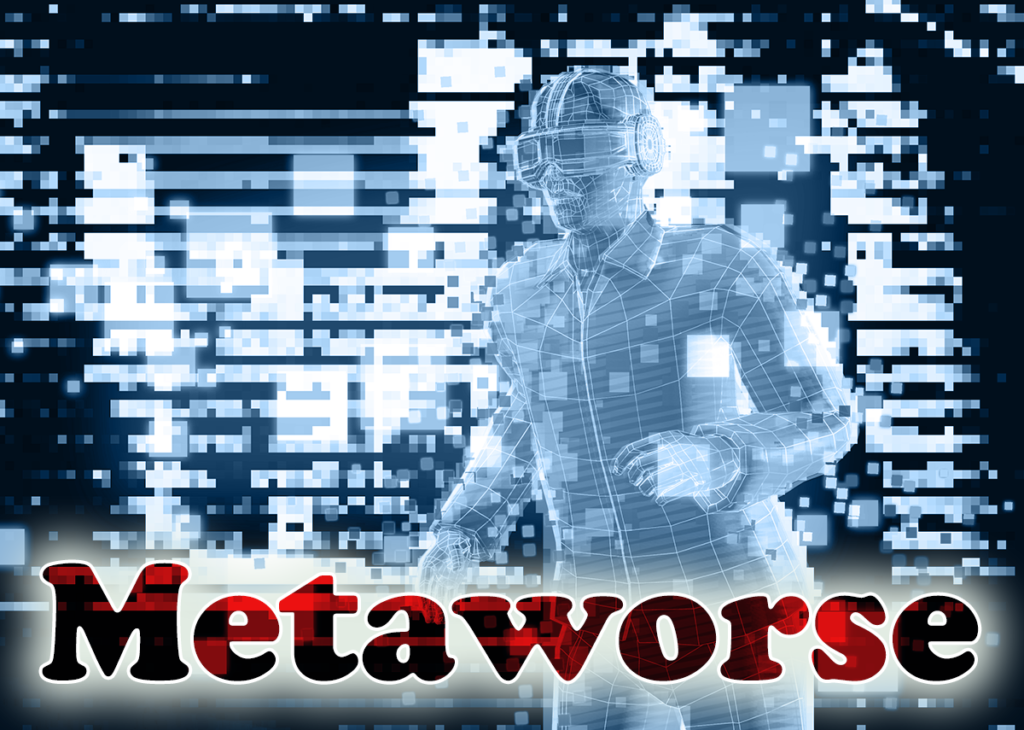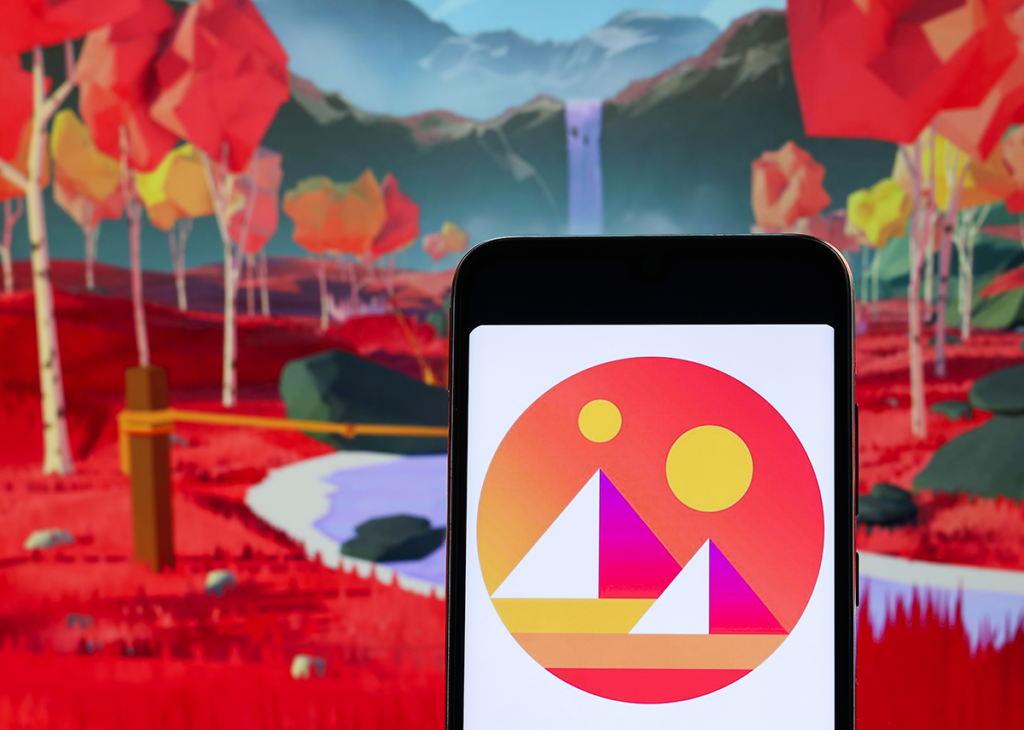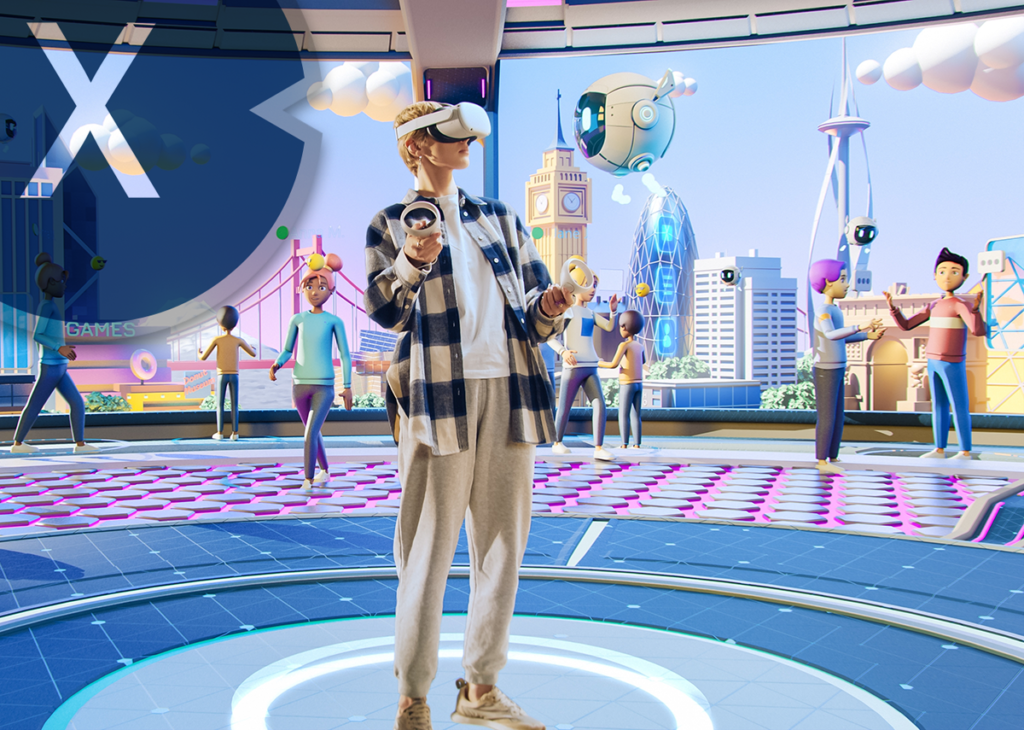Published on: January 7, 2025 / Update from: January 7, 2025 - Author: Konrad Wolfenstein
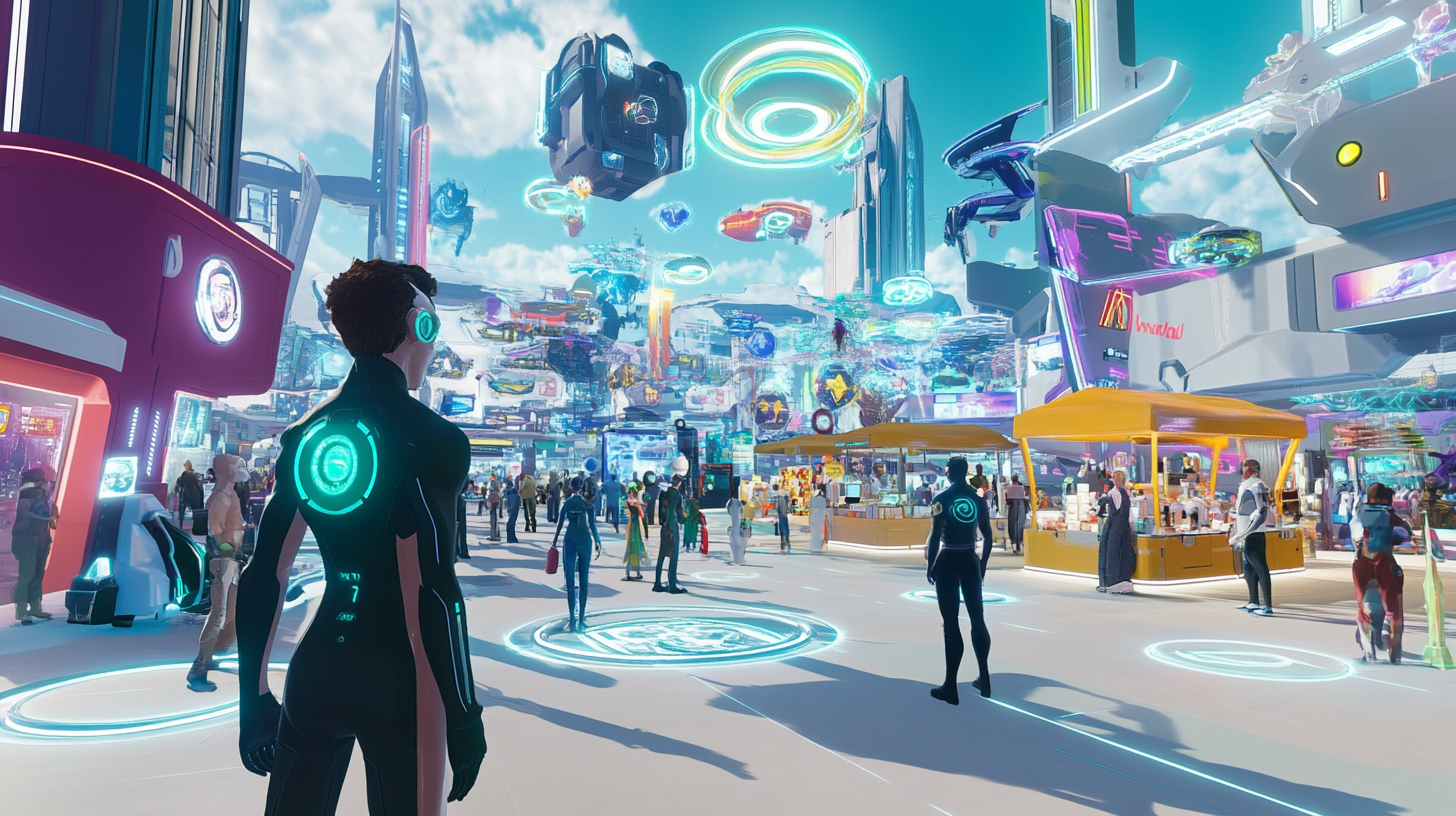
Metaverse platforms in comparison: A comprehensive analysis – From Roblox to Horizon: Where is it worth getting started? – Image: Xpert.Digital
Virtual future: The most exciting Metaverse platforms at a glance
Game, art and business: The new possibilities of the Metaverse worlds
Metaverse platforms are increasingly seen as places where people come together to play, work, purchase digital goods and socialize. Although the term “metaverse” has long been in the world of science fiction, it has become more and more tangible in recent years. The fascination of these virtual worlds lies above all in their diversity: from action-packed online games to immersive 3D environments in which art, music and social interaction merge, metaverse platforms open up a new form of digital presence. The most important platforms, their special features and possible developments are examined in more detail below. The focus is on what characteristics they fulfill to be considered a metaverse or a “proto-metaverse”, how they shape criteria such as persistence, social interaction, avatars, virtual economic systems and digital property rights, and what opportunities and challenges they face for the future stuck in them.
“Welcome to a world in which everything seems possible and the boundaries between reality and virtuality are becoming increasingly blurred.” This idea of the Metaverse is already encouraging many companies and private individuals to actively participate in the creation of new virtual worlds. In addition to classic gaming platforms with a community focus, decentralized concepts are increasingly coming to the fore where users can use blockchain technology for digital property rights. The following overview illustrates how diverse this field already is and how certain platforms focus on different aspects of the metaverse.
What is the Metaverse?
The Metaverse is often described as a progressive evolution of the Internet. While websites and apps rely primarily on 2D surfaces, the metaverse is moving into immersive 3D spaces. Users can interact in real time, spend time in different worlds, buy digital goods and even lead a virtual life represented by avatars. The Metaverse combines various technologies such as virtual reality (VR), augmented reality (AR), blockchain, artificial intelligence and social networks.
Important features of the Metaverse are:
- Persistence: The virtual world exists continuously, regardless of whether you are currently logged in or not. Events occur in real time and cannot simply be “reset”.
- Avatars: Users slip into digital roles that can be adapted and designed in a variety of ways.
- Social interaction: The focus is on shared experiences with other real people in virtual spaces. This creates a sense of community and sometimes even separate social structures.
- Virtual economic system: Many Metaverse platforms already have their own currencies and markets for digital goods such as clothing, art or real estate. These transactions usually take place within the system, creating their own economic cycle.
- Interoperability: A network of worlds and platforms is ideal. In a fully mature metaverse, an avatar could visit different platforms without losing important data or continually switching to new technologies.
Suitable for:
Overview and comparison of Metaverse platforms
1. Roblox
Roblox is known for its focus on gaming and the ability to create your own gaming worlds. Millions of people meet here to experience adventures together or try out various mini-games. Roblox features metaverse elements such as a persistent world, avatars, social interaction, and an internal economic system. The latter is made possible by the in-house currency called Robux. The focus is on the community: users can not only consume, but also create themselves. This promotes creativity and strengthens the feeling of being part of a big, living world. But although Roblox meets many of the criteria of a metaverse, the theme of fun is clearly in the foreground. Huge parallel worlds, complex economic systems and highly immersive experiences are developed by the community itself rather than dictated by the platform.
“The world of Roblox,” say many young users, “is like a huge construction kit in which everyone can create and experience anything they want.” There is a wide range of genres on Roblox: fighting games, virtual ones Amusement parks, role-playing games, racing games and much more. Teams of players often work on a new world for months before making it accessible to everyone. This strong user-centricity is a key feature, which is why many consider Roblox to be at the forefront of community creation within a metaverse.
Suitable for:
2. Minecraft
Minecraft showed early on how creative people can be in a virtual world. The gameplay revolves primarily around building, exploring and surviving in an open, mostly block-shaped world. Over the years, a huge community has developed that sets up its own servers with individual rules and offers players a variety of experiences. Minecraft is great for learning teamwork and planning when creating large buildings or complex mechanisms. From a metaverse perspective, Minecraft ticks a number of boxes: there are persistent worlds in which avatars operate freely, and the ability to interact with each other in multiplayer mode.
However, Minecraft's main focus is less on expanded social platform features or a standalone currency. Rather, it’s all about creativity and your own “survival” experience. But the openness and diversity of self-created servers, with their own rules and economies, gives Minecraft an important role in the area of virtual worlds. Some project groups even develop their own educational servers in which children and young people can virtually explore topics from school.
3. Fortnite
Fortnite is known to the general public as an action-packed battle royale game. But aside from the competition, in which 100 players fight each other in a shrinking arena, the platform has expanded its metaverse elements in recent years. Concerts, film premieres and other virtual events always take place in Fortnite. Gigantic music events that millions of people watched simultaneously in the virtual world became famous. “It feels like you’re at a concert with thousands of other fans, just from home,” is how participants describe the experience.
In this way, Fortnite is at least partially establishing itself as a social platform in which you can go beyond the pure gaming aspect. However, it is clear that the action-packed gameplay remains the focus and Fortnite can therefore be classified more as a game with metaverse elements. Nevertheless, it shows how much potential there is in the combination of entertainment and communal experience.
4. The Sandbox
The Sandbox is a blockchain-based platform that leverages a distinct economic system with digital property rights. Anyone who purchases virtual land here does so using NFTs (Non-Fungible Tokens). The land can be built on, designed and equipped with interactive content. An important aspect is monetization: Users can sell or rent self-developed games, works of art or virtual assets. “The idea behind such platforms is to give people control over their virtual goods,” emphasize many blockchain technology enthusiasts.
The Sandbox emphasizes the decentralized structure in which a central operator does not alone decide on the content. Instead, the owners and the community determine how the world develops. In the longer term, such platforms could develop into a new form of digital economy and art scene in which creatives can directly contact their audiences and carry out economic transactions. Even concerts, exhibitions or trade fairs could be organized in The Sandbox, with each parcel of land becoming an interactive place.
5. Decentraland
Decentraland is another decentralized platform where users can buy virtual land. Here too, NFTs are the focus. Ownership of digital properties is recorded in the blockchain, which is intended to ensure security and transparency. In contrast to some pure gaming platforms, Decentraland is more focused on creating a digital parallel world. “This world is controlled by the community and can constantly develop without being tied to a single developer,” is how many users explain the core principle.
Decentraland hosts social events, exhibitions, shows and other community events that give the feeling of being in a real city. Economically, Decentraland is closely linked to cryptocurrencies and allows trading avatars, clothing and other digital goods. This makes Decentraland one of the most exciting platforms for people interested in the Metaverse, blockchain and NFTs and looking for new ways to express themselves creatively.
Suitable for:
6. Horizon Worlds
Horizon Worlds is a platform developed by Meta (formerly Facebook) that focuses on social interaction and avatars in virtual spaces. A few years ago, Meta invested enormous amounts of money to develop its own Metaverse. One of the stated goals was to completely redesign communication and working environments. Meetings, events and social gatherings should increasingly take place in VR. “We want to create a world in which people can come together naturally, no matter where they are,” was the credo.
However, in the following years there were repeated reports of high costs and operational losses. For this reason, from 2023 onwards, Meta will increasingly shift its focus towards artificial intelligence. Nevertheless, Horizon Worlds continues to exist and shows what a social VR metaverse can look like. The platform offers avatars, some of which are tailored to real people, and different worlds that can be explored collaboratively. Games, creative tools and interactions are the focus. Horizon Worlds is an exciting place, especially for people looking for the most realistic VR experience possible, as it provides an approach to how future versions of digital community interactions could work.
Suitable for:
7. Somnium Space
Somnium Space is a VR platform that relies on the idea of a persistent world. Here, too, users can purchase and build digital land, which is made possible by blockchain technology. The world is continuously available in real time, which is intended to give the feeling of a continuous living space. The project is still in development, but that may be what makes it so attractive for early interested parties: “We are creating a world that is really shaped by the users. “Everyone can be a pioneer and contribute their own ideas,” is how many participants see themselves.
The goal is to create a seamless VR environment in which to meet friends, shop, attend concerts, develop properties and enjoy other activities. The focus here is on the experience: Anyone who enters Somnium Space is transported into an immersive world in which both free exploration and business transactions are possible. Somnium Space combines different approaches: it's about fun and community as well as monetization and ownership.
8. Cryptovoxels
Cryptovoxels – similar to Decentraland and The Sandbox – focuses on digital property rights and virtual land. The pixelated aesthetic is reminiscent of art projects or a digital minimalist world. Users who have purchased property can build buildings, exhibit art objects or open shops. Events where you meet avatars are also possible. What's special about Cryptovoxels is, among other things, the strong reference to the crypto scene, as practically all transactions are based on blockchain.
“Creatives and artists come together here to present and sell their works in virtual galleries.” Many see the platform as a kind of innovative art marketplace in which new forms of digital expression unfold. Anyone who takes part here will immerse themselves in an unusual world that is at the intersection of art, technology and community.
9. Axie Infinity
Axie Infinity is best known as a play-to-earn game where you can breed, collect and compete against each other with digital creatures called Axies. Here too, NFTs are used to secure ownership of the Axies. Thanks to this mechanic, Axie Infinity temporarily developed into one of the most lucrative blockchain gaming platforms where players could actually earn money.
Axie Infinity definitely has some Metaverse elements: an active community, virtual items with real value and persistence. However, the overall system is more focused on gameplay and collecting digital creatures, rather than forming a comprehensive virtual world. Nevertheless, Axie Infinity is considered an important pioneer for the combination of blockchain technology, gaming and its own economy.
10. VR Chat
VRChat is a social VR platform that is not limited to a specific use case. Rather, it's about interaction in diverse worlds designed by the community. Users can create their own avatars, which often reflect their imagination or personal preferences. There are no set limits when it comes to the possibilities of avatar design.
In VRChat you can find discussion groups, karaoke evenings, improvisational theater, dance events and many other formats that would sometimes be difficult to implement in physical spaces. “If you want to take part in a poetry slam as a robot, mythical creature or cartoon character, you can do that,” say long-time VRChat users. This freedom is one of the main attractions. VRChat thus fulfills many of the criteria of a metaverse: social interaction, ongoing community events, the opportunity to live out a different identity and even an internal economy (albeit less pronounced than in some blockchain-based worlds).
More platforms and proto-metaverses
In addition to well-known names such as Roblox, Minecraft or Decentraland, there is a wealth of other platforms that are often referred to as the proto-metaverse. This conceptual distinction shows that not every virtual world offers the full scope of a metaverse, but does contain important elements.
- Second Life: Often referred to as the “first metaverse” because it early on offered numerous aspects of a virtual social space. Avatars, its own currency, real estate and creative tools for creating content made Second Life a pioneer. Even though it has been pushed into the background by more modern platforms, Second Life still has a loyal community and was groundbreaking in many ways.
- IMVU: A social platform focused on avatars and virtual goods. Users meet in chat rooms that can be customized with virtual goods. Here too, mostly cosmetic objects are traded.
- Sansar: Developed by the creators of Second Life, Sansar was intended to be a more modern and, above all, VR-optimized platform. The goal was to create detailed environments for events and social interactions.
- High Fidelity: An open source platform that makes it possible to build your own virtual worlds. It is aimed primarily at developers who want to delve deeper into the technology.
- Upland: Virtual land that is linked to real locations is traded here. This idea links the actual world with the virtual one, with NFTs and crypto transactions playing a role.
All of these platforms show how rapidly the topic of metaverse is becoming more important. More and more companies and private individuals are interested in digital identities, virtual real estate and ways to digitize real products. The boundaries between digital and real life become blurred when, for example, concerts or product presentations in digital environments attract large crowds.
Suitable for:
- The Top 15 Metaverse Games in 2024 from fgfactory.com (English)
- 20 Popular Metaverse Platforms from shardeum.org (English)
Economy and digital property rights
A central issue for many platforms is the question of digital ownership. What does it mean to “own” property or works of art in a virtual world? Blockchain-based solutions rely on the principle of NFTs: ownership of a digital asset is clearly assigned cryptographically. Owners can trade with them or display their goods. In The Sandbox, Decentraland or Cryptovoxels, entire properties are traded via NFTs and sometimes sold at high prices.
“We believe in a future in which virtual goods have the same value as physical goods,” say advocates of this technology. Skeptics, on the other hand, warn of speculative bubbles and unstable market conditions, as values in cryptocurrencies can fluctuate greatly. Nevertheless, it is clear that this trend towards digital ownership is seen by many as the key to building a sustainable metaverse.
Social and psychological aspects
In addition to the technical and economic issues, the metaverse is also important from a social perspective. Virtual worlds enable people to exchange ideas regardless of geographical distances and offer space for identity development. Young people in particular often grow up with digital environments in which they can develop a sense of community that is just as intense as in the real world.
However, challenges are also emerging: issues such as data protection, cyberbullying, mental health and addictive behavior are becoming important factors. “When virtual life becomes a priority, some users forget to get a foothold in real life,” is a recurring criticism. On the other hand, metaverse platforms can provide a community or reduce barriers (e.g. physical limitations) to people who feel isolated in physical life.
Future prospects and potential
The rapid development of technology suggests that the Metaverse will increasingly penetrate our everyday lives. VR glasses are becoming cheaper, lighter and more comfortable. Augmented reality technologies could seamlessly overlay digital content on the real environment. At the same time, faster networks and better graphics engines ensure increasingly realistic displays and immersive experiences.
In the future, the metaverse could become a place where companies build entire business models. Virtual shops, digital educational institutions, showrooms for new products and international working environments would be accessible at any time. Instead of video conferences, people meet in virtual meeting rooms where they look at projections and prototypes together.
The Metaverse could bring about a revolution, especially in the education sector: Instead of cramming dry theory, students learn in virtual laboratories in which they can safely carry out chemical experiments or visit historical places in an interactive form. Many platforms are already using gamification elements to convey complex topics in an interesting and accessible way.
Competition and cooperation
While many platforms still remain somewhat niche, increasing competition is becoming noticeable. Big tech companies are investing heavily to develop their own Metaverse products, while blockchain companies are pushing decentralized alternatives. The question here is whether multiple metaverse ecosystems will coexist in the future or whether some kind of standard will emerge that enables interoperability between the worlds.
Some experts predict a consolidation in which only a few metaverse platforms are highly relevant, similar to today's social media giants. Others, however, hope for a colorful variety of decentrally organized worlds in which users can act independently.
The role of artificial intelligence
In 2023, the company behind Facebook, now Meta, shifted its focus again to artificial intelligence. This development exemplifies that the Metaverse remains a major trend, but is in conflict with other technologies. However, AI models could have a decisive influence on the metaverse in the future by making avatars, NPCs (non-player characters) and environments more dynamic.
Let's imagine that an AI creates realistically reacting characters in the background, or that the architecture in a metaverse city is designed based on AI recommendations, resulting in city planning that takes into account the behavior of the avatars in real time. “Artificial intelligence can help make virtual worlds come alive,” explain enthusiasts, pointing to automated content generation, smart translation functions or individually tailored worlds of experience.
Challenges for the Metaverse
Despite all the opportunities, the challenges cannot be overlooked. Data security and privacy must be guaranteed when people share personal information on a large scale in digital spaces. The handling of user data becomes even more important as soon as biometric data (such as movement data from VR glasses) is added, which allows conclusions to be drawn about emotional states and health aspects.
“We need regulations to protect citizens’ digital self-determination,” demand voices from the consumer protection sector. Because in a digital world that is so close to reality, manipulation and abuse become just as dangerous as in real life. There are also economic risks: Anyone who speculates in virtual properties must expect that a platform will lose popularity or be overtaken by a new technology.
Last but not least, there are technological hurdles in the way: In order to create a truly immersive metaverse that accommodates millions of users at the same time, enormous server capacities, high bandwidth and stable infrastructure are necessary. Although technology is growing rapidly, it remains to be seen when a large-scale metaverse will be accessible, affordable and secure for everyone.
Identity and Culture in the Metaverse
An exciting aspect is the question of digital identity. Avatars can be deliberately chosen to match a certain look, personality or culture. In some cases, very own subcultures develop within these worlds in which fashion, art and music find new forms of expression. Concerts in Fortnite, galleries in Cryptovoxels and virtual parties in VRChat are just a few examples of cultural events that have a large following online.
“In the Metaverse I can be myself or someone completely different – and that’s liberating,” say many enthusiasts who are creating a new identity for themselves in these spaces. However, this also raises philosophical questions: Will the virtual self become so present at some point that the physical self fades into the background? What are the ethical implications of behaving in a digital world in ways you would never do in reality? These discussions will probably become more explosive as the metaverse becomes more widespread.
Metaverse is not a unified concept
The platforms mentioned at the beginning such as Roblox, Minecraft, Fortnite, The Sandbox, Decentraland, Horizon Worlds, Somnium Space, Cryptovoxels, Axie Infinity or VRChat show that the Metaverse is not a uniform concept, but has different focuses and characteristics. While Roblox and Minecraft shine in the area of community-based gaming, The Sandbox and Decentraland rely on decentralized structures and digital property rights. Platforms like Horizon Worlds or VRChat focus heavily on social interaction in VR environments.
Suitable for:
Even if some concepts focus more on a core feature - be it creativity, economics or social issues - overall they pursue the vision of a virtual world that is becoming increasingly important and increasingly intertwined with the real world. In addition, there are proto-metaverses such as Second Life, IMVU, Sansar, High Fidelity or Upland, which expand the field and show how multifaceted virtual spaces can be designed.
The view of the future is promising and challenging at the same time. Companies and consumers must deal with issues of data protection, regulation, interoperability and social implications. An ideal metaverse would be a connected world in which technologies work together smoothly and every user has the freedom to design their own spaces, build businesses or simply enjoy themselves. Whether and how quickly this vision becomes reality depends on many factors: technical progress, social acceptance, political regulation and, last but not least, the will of those who are actively shaping the metaverse.
One thing is certain: The Metaverse is not a short-lived trend, but a profound development that is already disrupting and redefining industries such as gaming, art, education, real estate and social media. Given the rapid growth, there are likely to be further platforms, innovations and mergers in the coming years. It is possible that at some point a Metaverse standard will emerge that consists of various “islands” that are seamlessly linked to one another.
Many enthusiasts are convinced: “The Metaverse will shape our digital lives just as much as the smartphone did in the past.” But whether this prediction will come true cannot yet be said with certainty. The only thing that is certain is that people have the need to express themselves digitally, to network and to have new experiences. Virtual worlds open up a space in which creativity, social interaction and economic activities can develop in a new way.
The race to shape this future space is in full swing, and the various Metaverse platforms are already providing exciting insights into different concepts. While some focus more on gaming and entertainment, others devote themselves to art, commerce or social networking. In the end, there will probably be a coexistence in which users decide for themselves where they feel virtually at home.
Although there are still many technical, legal and cultural hurdles to overcome, all indications are that the journey into the Metaverse has only just begun. And while long-established platforms like Second Life impressively demonstrate how long-lasting this type of virtual existence can be, new platforms are inspiring with their innovative use of blockchain, AI and VR. For everyone who is open to immersive experiences, social interaction and digital ownership, the Metaverse already offers countless possibilities. And in the coming years, these are likely to grow and develop even further - towards a world in which virtual and real life are increasingly merging and together shaping a new form of digital society.
Suitable for:
- Meta Reality Labs and the 'Horizon Worlds' Metaverse in the field of augmented and virtual reality - Image: Diego Thomazini | Shutterstock.com
- The KAIZEN or iteration metaverse – Image: Xpert.Digital
- Metaverse put to the test: A critical look at current developments – Image: Xpert.Digital
- Metaworse - Criticism of the Metaverse plans of major digital corporations and monopolists - Image: Xpert.Digital / Athitat Shinagowin|Shutterstock.com
- Dekaverse – DekaBank is in the Metaverse Decentraland – Image: photo_gonzo|Shutterstock.com
- What should a real metaverse be able to do? – Image: Xpert.Digital
We are there for you - advice - planning - implementation - project management
☑️ Our business language is English or German
☑️ NEW: Correspondence in your national language!
I would be happy to serve you and my team as a personal advisor.
You can contact me by filling out the contact form or simply call me on +49 89 89 674 804 (Munich) . My email address is: wolfenstein ∂ xpert.digital
I'm looking forward to our joint project.


